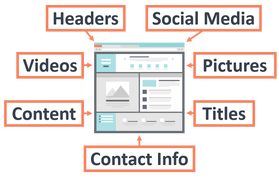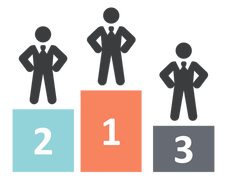|
When it comes to Search Engine Optimization on your site the best place to start is with keyword research. Not only researching what you can work on your site's content but understanding what people are actually searching for. The same principle can go towards understanding how much a budget can cost and what it will take to actually compete for top rankings and traffic. Below I will go through the steps and what I review for keyword research in 2016. Site Analysis  Review the website and determine what it offers from a content perspective. While content can always be expanded and added. It is important to remember that there are millions of keywords and it is best to go as niche as possible and then expand to more general keywords. Reviewing the websites content will allow you to identify the exact product/service and area that you should be searching for. From here create a generic list of potential keywords. These should be made up and should match exactly what the website offers. Keyword Discovery  Once you have a list of keywords you can use the Google Keyword Planner to identify the volume and other variations of your keywords. From here you need to continue to gather as many keywords as possible. Further analysis of these keywords will help you understand the intent and probability of ranking for a keyword. You can also use a few other tools like Google’s instant search or ubersuggest to help find practical alternatives to your keywords. Competition Analysis After compiling a list of keywords, you can begin to apply different data points to each one in order to help you make your keyword selection. The first thing you will want to grab is the data provided by Google’s Keyword Planner. The second data point that we will use would be Moz’s keyword competition score. Third you will need to grab the ranking of the website and the keywords. I would highly suggest using RankTank to grab a sites rankings. Lastly, you will need to determine the intent of each keyword. The easiest way of determining this is by reviewing the SERPs themselves. From here you can classify each one into one of these groups. Keyword Selection  Once the data has been collected or identified you can begin to narrow down your keyword list. First and foremost I would take 2 factors as the primary factors for your selection. Ranking and Intent, this can help you not waste time and spin your wheels and effort on pointless keywords that never yield any ROI. The other factors I would use as tie-breakers to help you determine which keywords should be picked over others. I would suggest picking a good amount of keywords (around 5-15 per page). I would highly suggest adhering keywords to pages. Keep in mind the goal is not to necessarily rank for every single keyword but rank for a good amount. This kind of tactic can you keep you white-hat and can also help you create content that is best for the user and not the search engines. Website Needs  With the final set of keywords selected you can now identify specific page and site wide needs. This can include things like content, pictures, lists, or other forms of content. It is key to take into account the time needed to complete these items. There is nothing worse than expecting results to happen when you are still working on site needs. Keep in mind that you will need to do some kind of link-building to see optimal results. Also, keep in mind that some keywords will naturally take longer than others depending on your current relevance and trust. Tracking and Improvement  Finally, you can track and see the benefits of your work. To give you an idea of what you can expect with onsite and offsite work. On keywords you are already ranking for you should see yourself go to the first or second page in the SERPs within the first 3-6 months. For keywords, you don’t have any rank for you can expect the same results after 9-12 months. After you have seen results come in for your website you can begin to make tweaks around the sites needs and keywords themselves. It is imperative that you understand that ranking takes time, persistence, and work. It is a long-term strategy that has benefits further reaching then just traffic. Things like brand/product recognition and trust can have far-reaching implications for years to come. Hope you liked the blog for today, feel free to leave a comment and let me know if I missed anything. If you like the tips provided follow me on twitter @Hectick_C for more to come!
0 Comments
Your comment will be posted after it is approved.
Leave a Reply. |
Hectick SEOI have always had a fascination with search engines and how they work. SEO allows me to interact and impact search engines in a positive way. Connect with Me!Archives
May 2016
Categories
All
|


